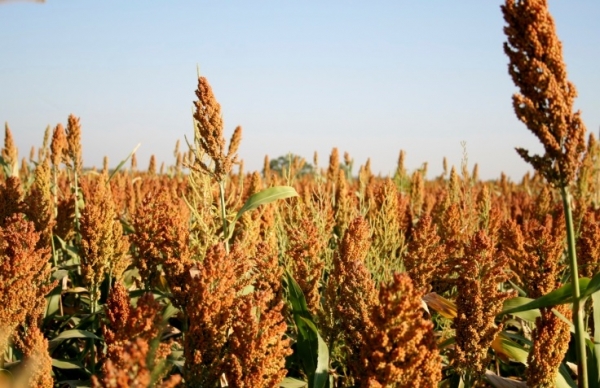
With advances in corn genetics to increase drought tolerance, and the adoption of glyphosate-resistant corn, many farmers may ask, “Why should I grow grain sorghum?” Bob Fanning, SDSU Extension plant pathology field specialist, has the answer.
“Sorghum in a crop rotation can provide significant benefits,” Fanning said. “Although there is no perfect or right crop rotation, each crop a producer can work into their production system offers flexibility of intensity and diversity, which especially helps no-till production systems approach stable and sustainable profitability.”
Fanning said at least three crop types: broadleaf and cool season grasses, as well as warm season crops, planted in long intervals of two to four years, are needed to break some of the disease, weed and insect cycles. “Sorghum is a viable option for much of South Dakota,” he said.
Grain sorghum, also referred to as milo, has long been known as a drought tolerant crop. Sorghum shares the water use efficiency of other warm-season grass crops. Sorghum requires about 6.5-inches of moisture to reach the point where it will produce grain. The production with additional moisture however is very efficient accumulating about 500 pounds of grain or about 9 bushels per acre-inch of rain once that point is reached.
“Sorghum is also well-known to be beneficial in maintaining high populations of pheasants, and the seed cost is low compared to corn,” Fanning said.
He added that corn and sorghum are both warm season grass crops, so including both crops in a rotation may not appear to add diversity. “The reality is that there is some difference in planting date, some variation in herbicide options, and sorghum offers both disease and insect pest benefits,” he said.
Breaking disease and pest cycles. In the disease arena, Fanning said sorghum also provides some positive benefits.
“Milo offers a rotational crop ahead of corn that can help control Goss’ wilt,” he said.
Goss’ wilt is a bacterial disease that can seriously plague corn producers. Fungicides offer no control for Goss’ wilt and their use can actually make the disease worse, since they can end up weakening the natural, protective layer on the leaf and because they kill beneficial fungi, which feed on bacteria.
“Bacterial stripe and bacterial streak can occur on sorghum, but neither have warranted control measures, and are different organisms than Goss’ wilt. With no pesticides effective against Goss’ wilt in corn, control measures are limited to hybrid resistance, crop rotation and residue management. Astute no-till producers understand that they need as much residue as they can get, so they have no interest in tilling or removing residue,” Fanning said.
When it comes to pests like corn rootworms and corn borers, which can plague corn producers, sorghum can be a much needed control tool. “Neither insect affects or can survive on sorghum, adding another benefit to including the crop in rotations,” he said. “Several of these characteristics may explain why higher corn yields have been reported at the Dakota Lakes Research Farm when the corn follows sorghum than when corn follows corn.”
Dwayne Beck, manager of the Dakota Lakes Research Farm, said grain sorghum is grown at Dakota Lakes because it’s better than corn when it’s hot, when it’s dry, for catching snow, it has less insect pressure, lower seed cost and the residue is easier to seed into.
With this in mind, Fanning encouraged farmers operating in regions of South Dakota where sorghum is adapted to consider making sorghum a part of their crop rotation.
Source: SDSU news release
© 2014 Rural Radio Network. All rights reserved. Republishing, rebroadcasting, rewriting, redistributing prohibited. Copyright Information
Related articles





